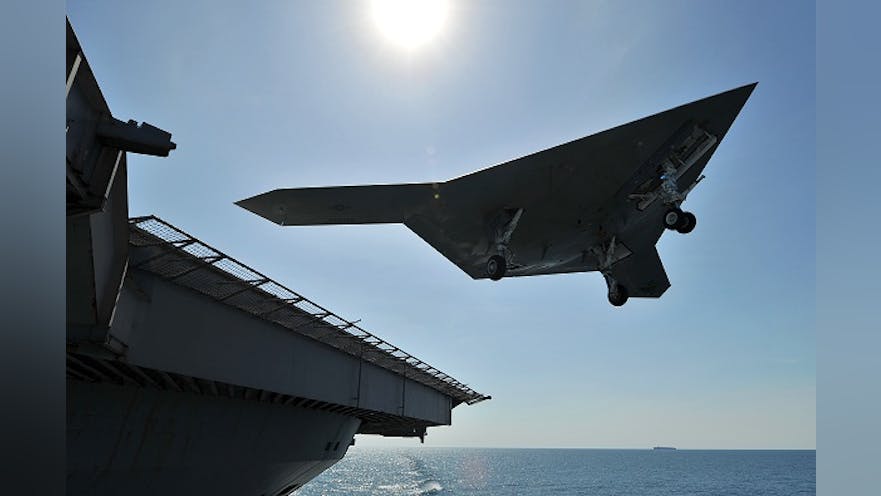The U.S. Navy’s X-47B drone, designed and built by Northrop Grumman Corporation, recently completed flights that demonstrated it could land and take off from an aircraft carrier.
In May, the drone was launched off the flight deck of the nuclear powered aircraft carrier USS George H.W. Bush (CVN 77). The X-47B then flew for 65-min. above the Chesapeake Bay as it headed for a landing at Naval Air Station Patuxent River, Md. This flight proved the unmanned aircraft can withstand catapult launches, fly safely through national airspace, and control of it can be transferred between two mission controllers.
The drone completed a touch-and-go landing on May 17th aboard the CVN 77’s deck in the Atlantic Ocean. In the touch-and-go sequence, the X-47B’s wheels briefly made contact with top of the carrier, and quickly took off again. By completing the touch-and-go, it was a prelude to shore-based arrested landings at NAS Patuxent and carrier-based arrestments.
Last week, July 10th, the X-47B completed an arrested landing on the deck of the CVN 77. It flew 35 min. from Pax River to the carrier. The drone caught the third wire with its tail hook, coming to a full stop after previously moving at an estimated 145 mph.
The X-47B has a wingspan of roughly 62 ft., but this is reduced when the wings are folded, letting it use less space onboard the carrier, and it’s about 10.5-ft tall. It flies as high as 40,000 ft, has a range of 2,100 nautical miles and travels at just under the speed of sound. It can carry 4,500 lb of munitions in its enclosed weapons bay.
The tailless drone is powered by a single Pratt & Whitney F100-PW-22OU, and P&W also designed and built the exhaust system. Versions of the same afterburning turbofan have been successfully flown on the F-15 Eagle and F-16 Falcon.
Watch the first touch-and-go test flight of the drone below.
